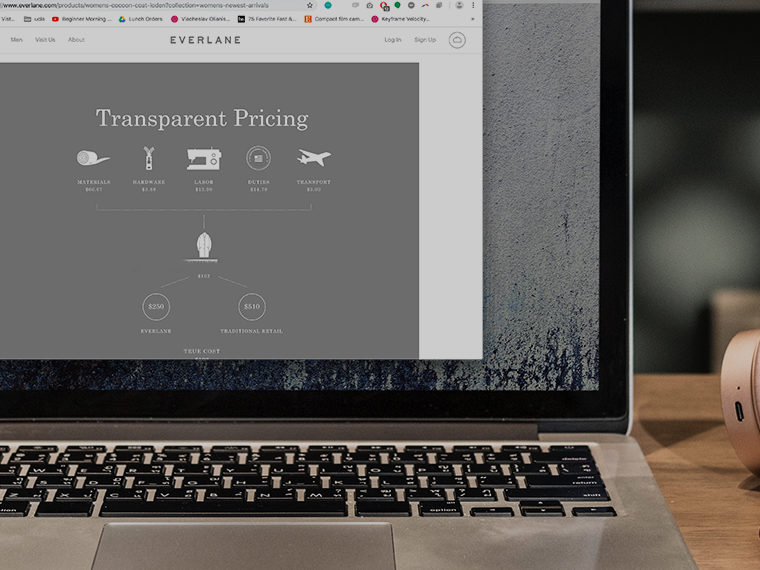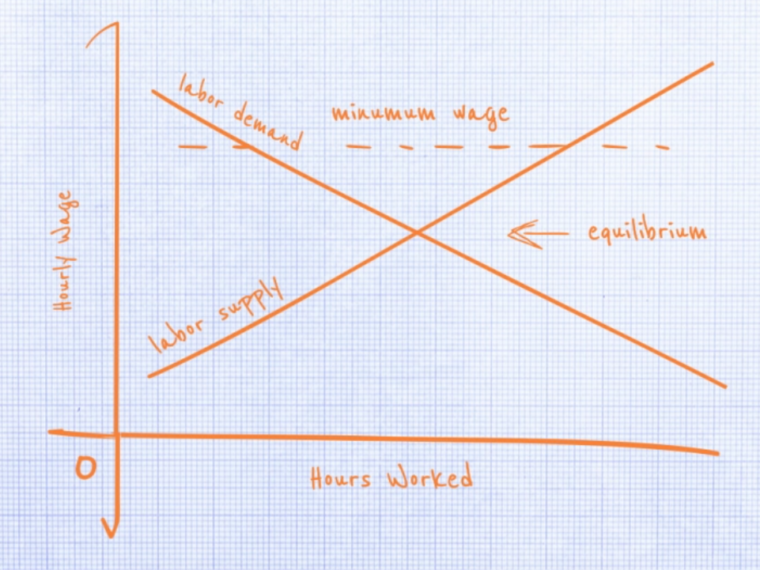Many assume salary transparency will benefit employees, but research suggests downsides, too
Wage stagnation — along with the persistent underpaying of women and minorities relative to their white male counterparts — has increased calls for pay transparency in the economy.
Don’t markets operate better with free and equal access to information? Isn’t finally learning what her male co-workers are paid the factor that causes a female employee to demand a raise? Isn’t wage disclosure essential to unionization and collective bargaining?
Indeed, the concepts of fair pay and access to salary information are linked in labor acts. The Lilly Ledbetter Fair Pay Act of 2009, which restores retroactive protections against pay discrimination, advocates transparency. And federal and some state laws prohibit employers from retaliating against workers for discussing pay (a right granted under the National Labor Relations Act of 1935).
Opt In to the Review Monthly Email Update.
Plus, transparency seems modern. Social media companies like Verve in London, Buffer in San Francisco and SumAll in New York use pay transparency as a cultural differentiator and as a recruitment tool. No secrets here. Overall, 17 percent of private employers in the U.S. now make pay transparent, reports the Institute for Women’s Policy Research (IWPR).
That’s not the traditional model: Two-thirds of private-sector workers say they’ve been discouraged or outright prohibited from talking about pay with co-workers, according to the IWPR. Zip it.
A company knows what everyone in house makes, of course, and has a pretty good idea what the competition’s workers make, thanks to salary consultants. At large companies, HR officers become experts on the relevant labor markets. The worker, though, knows next to nothing about who’s paid what. Now it’s time to negotiate. Not exactly a level playing field, is it?
And yet, how comprehensive salary information actually affects — or might affect — employment markets and people’s well-being is too little studied. Among the avenues of inquiry undertaken in a series of papers by UCLA Anderson’s Ricardo Perez-Truglia and Harvard’s Zoe Cullen: How does widely available income information play out across a society? How much value do workers place on pay information within their company? And how might a radically free exchange of pay data affect a labor market like TaskRabbit, where employer and worker essentially re-set compensation constantly?
Unhappy in Norway
Norway has long made tax records publicly available, but only on paper, in person, for a limited time each year. Then, for 12 years starting in 2001, the country’s newspapers put the tax database online, allowing anyone to search from anywhere, anonymously. During the busiest week of the year, Norwegians were likelier to search each other’s incomes than to search videos on YouTube. Apps popped up to let users browse maps that showed neighbors’ income, and to create leaderboards with the highest and lowest earners among Facebook friends.
Perez-Truglia, in a National Bureau of Economic Research (NBER) working paper, studied the effect of people’s easy access to the incomes of friends, neighbors and co-workers. He found that as a consequence, Norwegians’ well-being and their income more closely aligned; low earners reported being less happy and less satisfied with their lives, while high earners reported being happier and more satisfied.
Media accounts told of Norwegians’ online tax records being used to shame low-wage workers and bully their children. So, in 2014 Norway required people to register in order to search the tax records, meaning, anyone could learn at any time who had searched for them. Almost overnight, the number of searches dropped 88 percent. Most users of the database were now checking to see who’d looked them up.
Narrower pay databases have also unsettled some. The Sacramento Bee created a website listing California state workers’ names and salaries, which are public record, including those from the University of California. A team of UC-affiliated researchers surveyed a random subset of university employees, first informing them about the website and later polling them about job satisfaction. Lower-paid employees who visited the site reported feeling less satisfied with their jobs and likelier to look for new ones.
In one sense, the finding is troubling: People felt bad about their relatively low pay, or the fact it became known. In another sense, the finding can seem constructive: Might they demand a raise if they’re paid too little, or look for better work? Clearly there’s more to learn here.
It’s not hard to marshal a persuasive argument for or against making tax returns public.
What’s Salary Data Worth?
Harvard’s Cullen and Perez-Truglia in another NBER working paper surveyed employees at a large Asian bank to try to learn how much people thought salary information might be worth. Like more than 60 percent of U.S. companies, the Asian bank doesn’t disclose salaries. The bank also discourages employees from discussing salaries with each other.
To draw workers in to what is a sensitive topic, the researchers contacted 1,899 employees via email; 752 completed the survey.
The researchers invited the email recipients to participate in a competition in which they would guess the average salary of a random sampling of five peers. Those who came within 5 percent of the actual figure got a small monetary reward. After guessing, the players could elect to pay for information that would help them guess more accurately, and some were told they might be given an extra week to gather even more information. The workers were also asked to reveal their own salary and were offered varying rewards to measure how much they valued keeping it secret.
Among the findings: Workers were, on average, about 16 percent off in their initial guesses, no better than if the only information they possessed was their own salary. Most were willing to then search for better data and felt they’d improve their chances. Those offered bigger prizes expected to search more intently. On their willingness to pay for salary information, the median price was $13, but half seemed uninterested, thus bidding low; of those above the median, their median price was $130, indicating considerable value.
About 65 percent of respondents felt they’d benefit if the bank made salary data available, but they preferred it to be anonymous. Only 20 percent wanted to share their own salary; about half wouldn’t share their pay information with five peers even for $125.
Could Transparency Cut Wages?
In 2015, a Google employee named Erica Baker created an internal spreadsheet to share salary data. Eventually between 2 percent and 5 percent of Google employees entered salary data, and there were multiple reports that employees tried to use the spreadsheet to get raises.
In March 2018, almost 250 BBC staffers signed an open letter to the broadcast network’s director-general, demanding pay transparency to correct years of gender inequality. “It’s the fastest, cheapest and fairest way to begin to tackle unequal pay,” the letter stated. The BBC has pledged reforms by 2020.
Pro-transparency initiatives are based on the notion that workers can use salary data to negotiate a better — or at least fair — deal. Suppose you’re one of four very long-tenured and highly productive workers and you discover your three pod-mates all pull down 20 percent more than you do. You confront your boss. He’s a) angry you found out, and b) embarrassed and brings your pay in line (likely offering a lame excuse). In this discrete setting, transparency = equity.
But now imagine a far more complex, if transparent world: You’re applying for a job precisely like thousands of others in a workplace where salaries are disclosed. Because every worker can be expected to demand the pay of the best-paid worker, the company negotiates fiercely.
That’s the premise investigated in a working paper by Cullen and Brown University’s Bobak Pakzad-Hurson. The results of a model they built are surprising and not encouraging for transparency advocates or for workers: Pay in this model fell 7–8 percent and employer profits rose 28 percent. With wages low, employers hired more workers, which accounted for some of the increased profits in the model.
Before getting to the study’s details, consider this: Unions that extract favorable wages from companies have quite a bit more than the power to call a strike; they have professional staffs that analyze industry wages, understand company profit margins and competition, and know how to negotiate. That’s closer to a level playing field. One worker given access to a blizzard of data, well, that’s something less.
Cullen and Pakzad-Hurson analyzed all job postings, worker bids and other transactions from 2010 to 2014 on the TaskRabbit platform, where employers hire temporary workers for lower-skilled jobs. Online labor markets employ perhaps 7 percent of the U.S. workforce, or 14 million people. The short-term, constantly renegotiated nature of the gigs offers an accelerated look at how transparency works its way through a market. The findings aren’t necessarily applicable to traditional labor markets, but are certainly worth considering in the transparency debate.
The model, in addition to suggesting fierce negotiating by companies pre-employment, indicates workers looking to be hired would not be so tough. Knowing wages are transparent within the company, a worker would want to get hired and then, upon learning what others make, negotiate a raise. The combination of those factors depressed wages, Cullen and Pakzad-Hurson report.
“Our analysis of equilibrium wages, hiring rate and profits under greater pay transparency reveals consequences that are counterintuitive and economically large in a market for low-skill tasks,” Cullen and Pakzad-Hurson write.
Featured Faculty
-
Ricardo Perez-Truglia
Professor of Economics; Justice Elwood Lui Endowed Term Chair in Management
About the Research
Perez-Truglia, R. (2018). The effects of income transparency on well-being: Evidence from a natural experiment.
Cullen, Z., & Perez-Truglia, R. (2018). The salary taboo: Privacy norms and the diffusion of information.
Cullen, Z., & Pakzad-Hurson, B. (2019). Equilibrium effects of pay transparency in a simple labor market.






